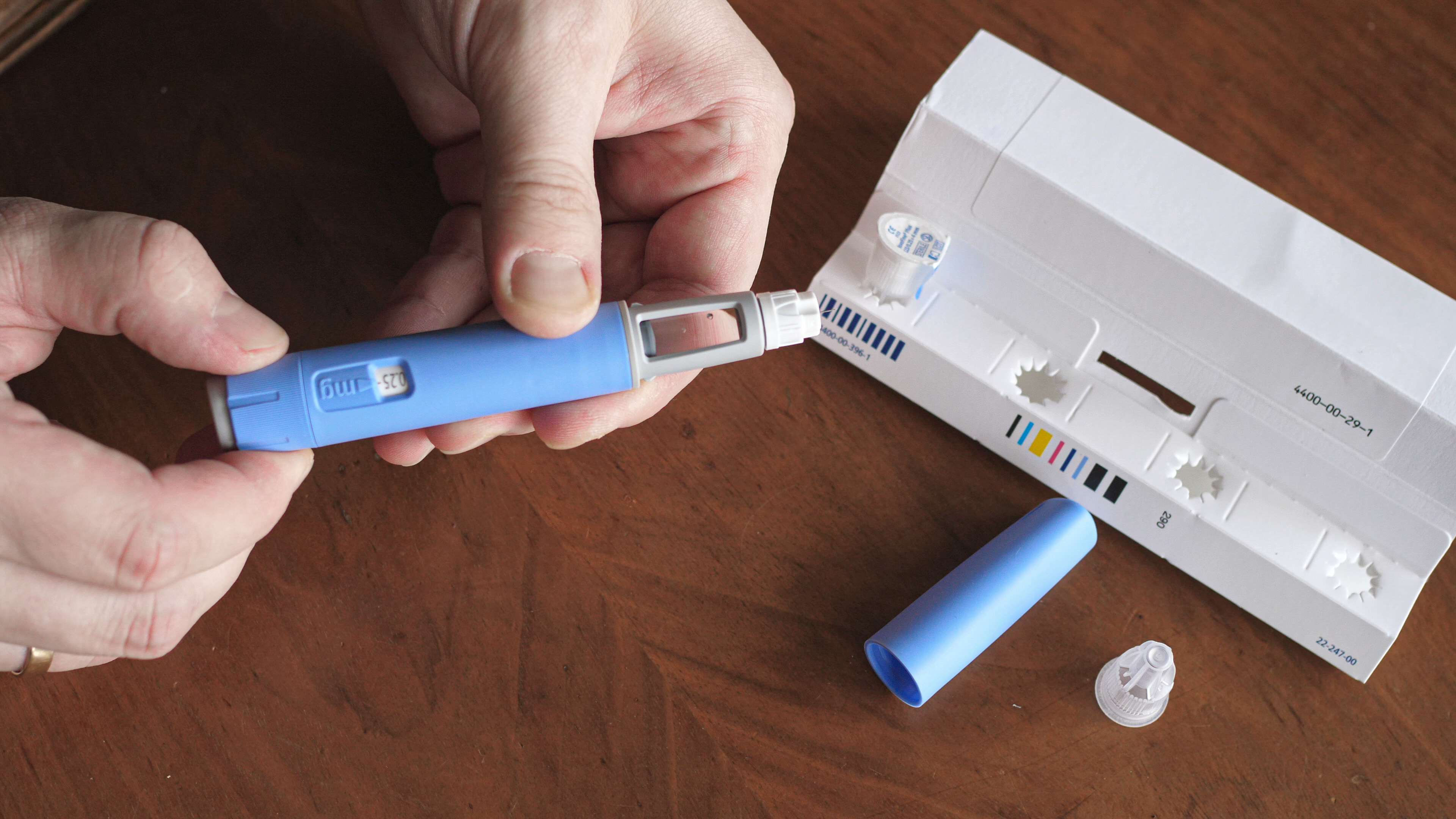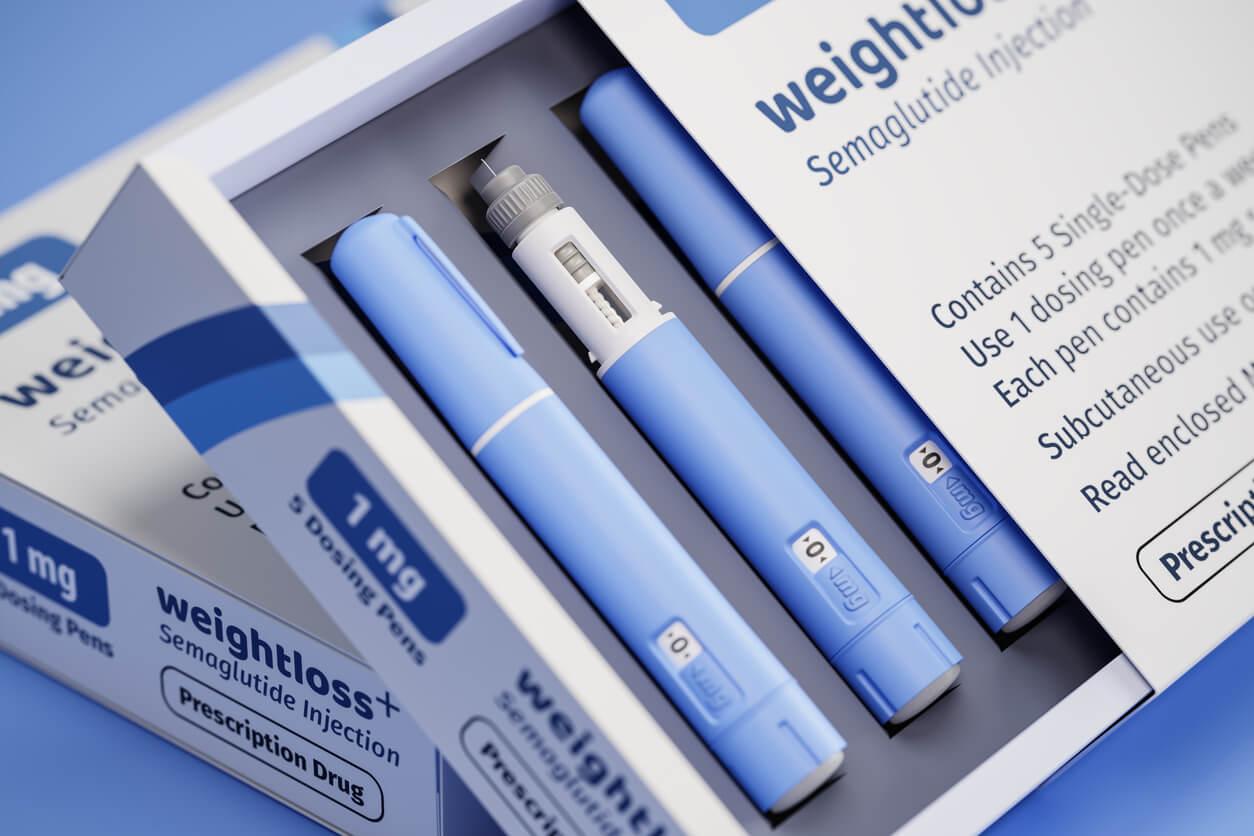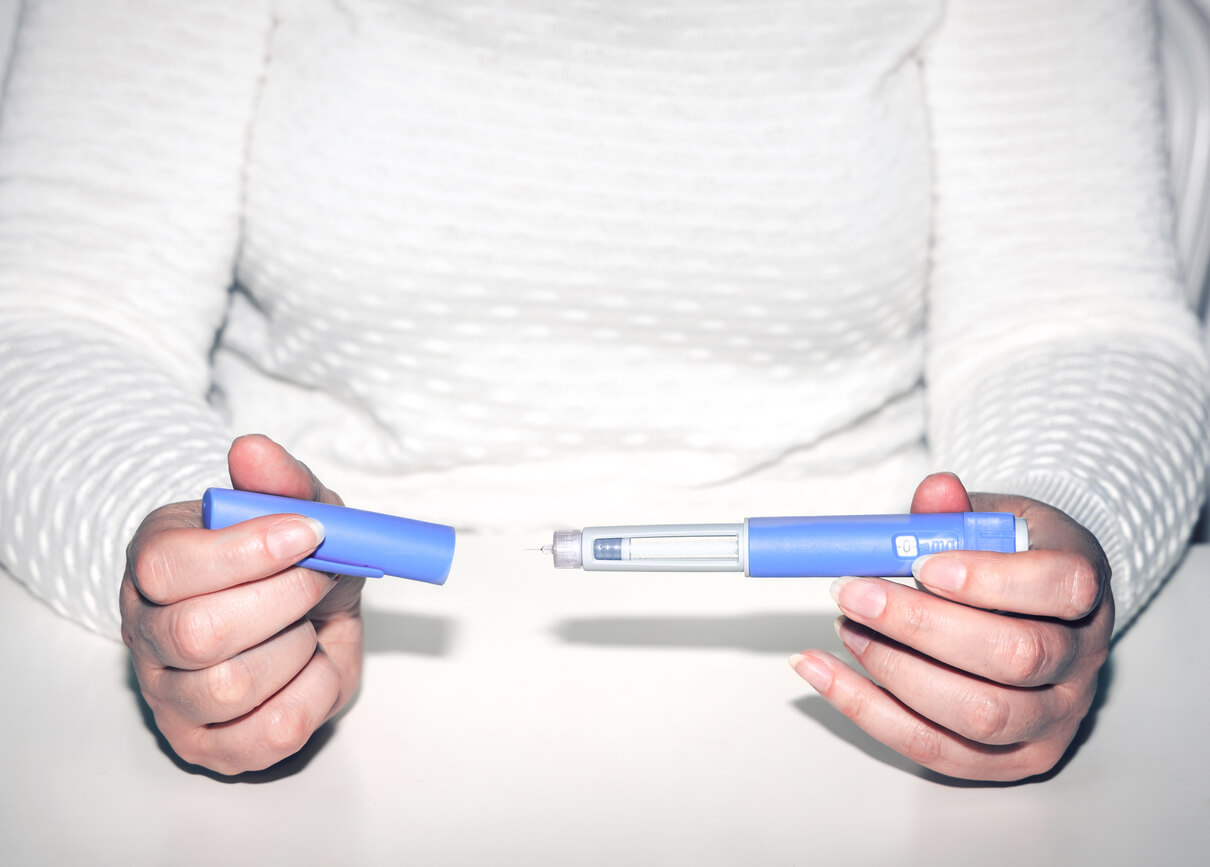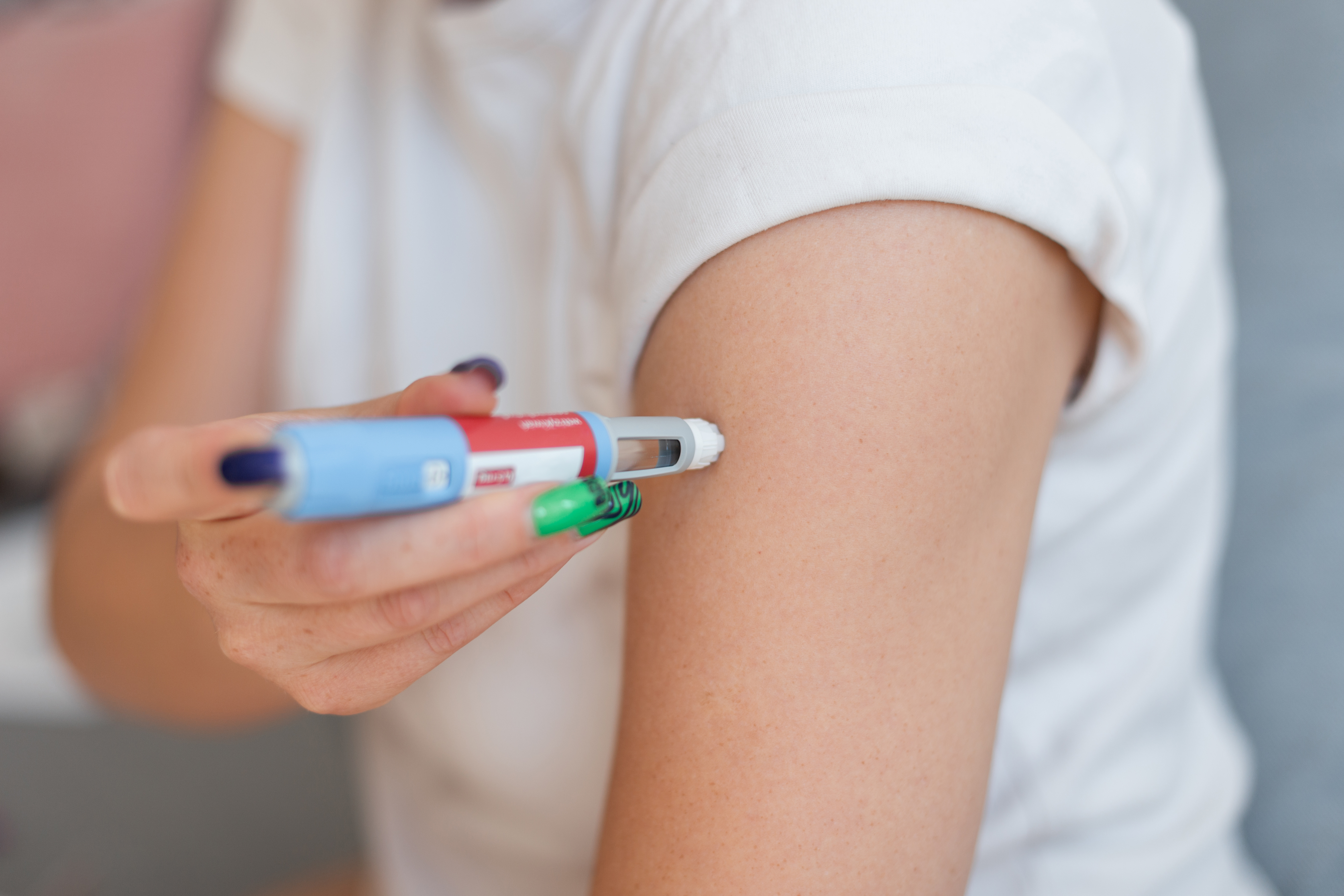6 Reasons You’re Not Losing Weight on Wegovy or Ozempic
Key Takeaways
- Weight loss with GLP-1 medications takes time - it can take up to 20 weeks to see visible results
- GLP-1 medications aren’t designed to be a standalone solution to weight loss, and you’re more likely to see results by implementing a healthier diet, frequent exercise and other lifestyle changes
- Underlying health conditions, medications, stress, and poor sleep can slow down your weight loss results, so it’s important to talk with a healthcare provider if you feel like your progress is stalling
You did it. You started your weight loss journey! You’ve spoken to a healthcare provider and received a prescription for a GLP-1 medication like Wegovy (semaglutide) or Ozempic (semaglutide).
But you’ve been taking semaglutide for a while. You’re not losing weight. What gives?
You may not see the results you were hoping for for several reasons. This article will explore some of the most common reasons why Wegovy and Ozempic aren’t helping you lose weight, along with tips for speeding up your weight loss.
What are Wegovy and Ozempic?
Wegovy (semaglutide) is a prescription weight loss medication made by Novo Nordisk. It is FDA-approved for weight management in adults and children over 12 with overweight or obesity.
Ozempic (semaglutide) is a prescription medication that’s FDA-approved for the treatment of type 2 diabetes. It's also approved to treat chronic kidney disease in diabetic patients. However, it is sometimes prescribed off-label for weight management because it works identically to Wegovy.
Semaglutide—the active ingredient in Wegovy and Ozempic—is a type of medication called a glucagon-like peptide-1 receptor agonist (GLP-1). It is a synthetic version of the natural hormone GLP-1, which works in part by regulating insulin release and slowing your stomach emptying to manage blood sugar and promote feelings of fullness.
Both Wegovy and Ozempic are prescribed alongside lifestyle changes like diet and exercise.
Why am I not losing weight on Wegovy or Ozempic?
You may not be hitting your weight loss goals while taking semaglutide injections for several reasons.
1. You need more time
Weight loss results take time! Keep in mind that the longer you take Wegovy or Ozempic, the more apparent your weight loss results will be.
For example, clinical trial participants taking 2.4 mg of semaglutide each week (the maximum allowed dosage for Wegovy) lost an average of 2% (about 5 lbs) of their body weight after 4 weeks of treatment. That number increased to 15% (around 35 lbs) after 68 weeks. Weight loss results may take even longer on Ozempic, which has a maximum allowed dosage of 2 mg of semaglutide per week.
In other words, results won’t happen overnight – that’s over a year of weekly semaglutide injections and healthy lifestyle changes.
Tip: If you’re frustrated by not losing weight, take stock of how long you’ve been using the medication. Many people don’t start seeing visible weight loss with Wegovy until the 20-week mark. Consider talking to your prescribing provider if it has been over 20 weeks. They can help determine whether a higher dose may help you reach your goal.
2. You need to eat a healthy, reduced-calorie diet
Wegovy and Ozempic are not prescribed alone. When providers prescribe semaglutide, they also advise healthy lifestyle changes like regular exercise and a healthy diet. If you have been struggling to lose weight while using Wegovy or Ozempic, ask yourself if you are maintaining these practices. Unhealthy eating habits like snacking between meals, overeating during meals, or eating a high-calorie diet may prevent you from getting where you want to go.
Tip: Talk to your provider about your dietary habits to see if there is anything you can adjust. They will likely recommend that you focus on eating nutritious food like vegetables, fruits, and whole grains while avoiding foods high in saturated fats or sugar. Your provider may also be able to suggest a sustainable meal plan and caloric intake recommendation to make sure you are getting the nutrition you need.
3. You need to get more exercise
Trials show that semaglutide is most effective for weight loss when patients get at least 150 minutes of moderate-intensity aerobic exercise each week. That’s equal to about 21 minutes a day or 30 minutes a day, 5 times per week. Aerobic exercise can be brisk walking, swimming, dancing, cycling, weight lifting, or jogging. Even yard work counts!
Getting at least 150 minutes of aerobic activity per week will also help reduce your risk of cardiovascular complications, like high blood pressure.
Tip: Ask a healthcare provider for some suggestions on starting your fitness routine. Jumping into high-impact, strenuous exercise leaves you at risk for burnout or injury. Work with your provider or a weight loss specialist to craft an exercise regimen that is appropriate for your needs and experience level.
4. Stress is hurting your progress
Did you know that high stress levels are associated with overweight and obesity? This is because stress encourages the release of cortisol, a natural hormone that plays a role in metabolism. It gives us a surge of energy but also encourages us to overeat or crave foods that aren’t as healthy.
Tip: Luckily, there are lots of steps you can take to relieve stress. Getting more physical activity can keep cortisol levels down, and so can stress-reduction techniques like deep breathing, yoga and meditation.
5. You need to get more sleep
In addition to managing your stress, it’s vital that you get enough sleep. Not getting enough sleep is linked to high cortisol levels and an increased risk of obesity. Aim for 7-8 hours of sleep per night.
Tip: Practice good sleep hygiene by turning in and waking up at the same time every day. Wind down before bed and avoid using your phone, laptop, or tablet right before trying to sleep. While these devices are a central part of nearly all of our lives, they can hurt the quality of your sleep.
Discuss your sleep and stress with your healthcare provider. Incorporating healthy sleep habits into your daily routine may help you start seeing the results you want.
6. You’re dealing with an underlying health condition
If you’re not losing weight on Wegovy or Ozempic, it might not be due to anything you are or aren’t doing. It may be that an underlying medical condition is to blame. Conditions like hypothyroidism can make it hard to lose weight.
Additionally, certain medications, like antipsychotics and some blood pressure medicines, may cause weight gain. They may also slow weight loss.
Tip: If you have been maintaining healthy habits while taking Wegovy or Ozempic and are not losing weight, talk to your provider. They may screen you for other health conditions. Before starting treatment with semaglutide, tell your provider about your medical history and any medicines you are taking. This will reduce your risk of harmful drug interaction side effects. It will also give your provider a fuller picture of your health and potential barriers to weight loss.
Are there alternatives to Wegovy and Ozempic?
Wegovy and Ozempic are not the only GLP-1 medications on the market. If you’re not seeing results, your healthcare provider may elect to increase your dosage. They may also prescribe a different medication instead.
Other GLP-1 or GLP-1/GIP medications that are FDA-approved for weight loss include Saxenda (liraglutide) and Zepbound (tirzepatide). Discuss these options with your provider, as well as possible drug interactions and side effects.
Should I talk to a doctor?
There are many reasons why you aren’t getting the results you want while taking a weight loss drug. The six detailed above are among the most common. They are also entirely fixable.
Remember that weight loss is a journey. If you’re frustrated by the process, talk to a healthcare provider. Ask about your treatment and what you can do to improve it. It may be that a simple lifestyle change will help speed up your weight loss on Wegovy or Ozempic. Or, you may have a medical condition that requires treatment before you can fully benefit from weight loss medication.
How Sesame can help
If you are exploring weight loss options and providers, Sesame offers an affordable and comprehensive online weight loss program to help you get started on your weight loss journey or continue your existing one.
Success by Sesame is a month-to-month subscription that includes video visits with a weight loss doctor or specialist of your choice, access to prescriptions for weight loss medication if appropriate, unlimited messaging with your provider, ongoing support, and more.
Maintaining a healthy weight can lead to significant health benefits, including a lower risk of heart disease, improved mobility, better sleep, and enhanced overall well-being. Get started on your weight loss journey today. Note that all prescriptions are at the discretion of your healthcare provider.
Related posts

Comparing the effectiveness of popular semaglutide medications Ozempic and Wegovy for diabetes and weight loss. Learn about cost, eligibility and more.

Wegovy costs about $1,349.02 per month, or $349 per month for self-pay patients. Learn more about how much Wegovy costs with and without insurance, plus tips to save money on a Wegovy prescription.

Wegovy is a recent entry into the expanding group of prescription drugs used to help people lose weight. This article will detail some basic facts about Wegovy, including how it works, its recommended dosage, and its side effects.

Losing weight is hard to do without a plan. Learn how the Success by Sesame plan can help you see real results with medication, ongoing provider support.

Ozempic (semaglutide) is a prescription diabetes drug also used to help with weight loss. Ozempic also reduces the risk of heart problems and heart disease..

Drinking alcohol while on Ozempic could increase your risk for low blood sugar, gastrointestinal upset and more. Learn about side effects, risks and more.

“Ozempic face” is a well-known side effect of weight loss drug use. Learn more about how weight loss affects the face, prevention, and treatment options

Constipation is a common side effect of Ozempic. While it tends to subside over time, these lifestyle changes and OTC treatments may help you find relief.

Do you like the idea of doing cardio in fuzzy socks? If so, you’re not alone. Cozy cardio is the latest viral fitness trend. It's taking social media by storm for its refreshing and comforting take on exercise.
